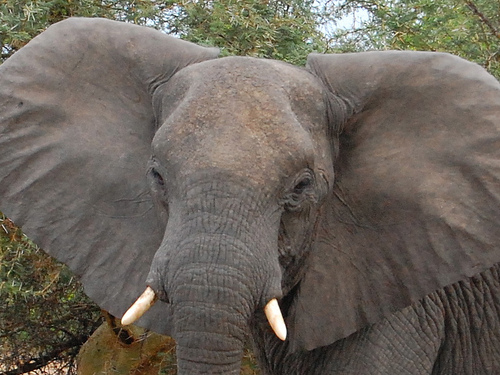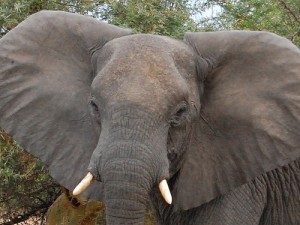Liwonde Game Park, Malawi … There are few exceptions. Almost all who travel to Africa are impressed with African animals, and want to see them up close in their natural environment. The Liwonde Game Park in Southern Malawi does not disappoint, and one of the chief attractions is the large number of African elephants who live within the park’s boundaries.
Eyes
There are a lot of unique characteristics with the elephant, but one that captures interest and fascination are an elephant’s eyes. Unlike other animals the eyes of an elephant reflect their emotions. Fear, boredom, envy, determination, anger are all emotions that are easily seen in the eyes. The eyes of African elephants appear to be half closed, and they do not see well. However, the lack of vision can be offset with memory. There are documented cases where a blind matriarch was leading a herd. Their eye lashes on both the upper and lower eyelids, and serve to protect their eyes.
Tusks
The tusks of an elephant are actually massive, enlarged, incisor teeth coming out of the upper jaw. The tusk is actually a hollow shaft, and contains nerve endings. If a tusk is broken the animal is in pain, and can become irritable and dangerous. Tusks grow to different lengths, and like humans who favor one hand or the either (right handed and left handed), elephants use their trunks differently depending on whether the animals favor their left or their right. Their tusks are excellent tools, and handle a large number of responsibilities, including lifting timbers, digging roots, tearing the bark from trees for food, and removing obstacles from their paths. They are made of ivory, and this has been the downfall of large numbers of elephants once roaming the African savannah. Ivory is so valuable on the world market that, even through it is forbidden to kill an animal for its tusks, poaching is actually on the increase across the continent. This is so serious it is actually threatening the future of the African elephant.
Trunk
Their trunks work closely with their tusks to handle difficult tasks, and also serve as their “funnel” for taking in water. They have a keen sense of smell and can detect a water source as much as twelve miles away. Their nostrils are in the tip of their trunk, and are their source for breathing and smelling. An elephants trunk is so sensitive it can detect pressure as light as 0.25 mm, and so powerful they can left weights as heavy as 550 lbs (250 kg).
Voice
Sounds originate from the larynx, and then it is amplified by vibrating columns of air in the trunk. They have a rich and varied language, and can be heard talking back and forth even when the other elephants are many miles away.
Family
Elephants travel in family groups, often as many as 20 to 30 in a group, with 2 or 3 females leading the group. These lead matriarchs are often sisters. The authority of the group rests with the mothers, and they demand respect from the other members of the family. Males go their own way, and hang out with other males.


